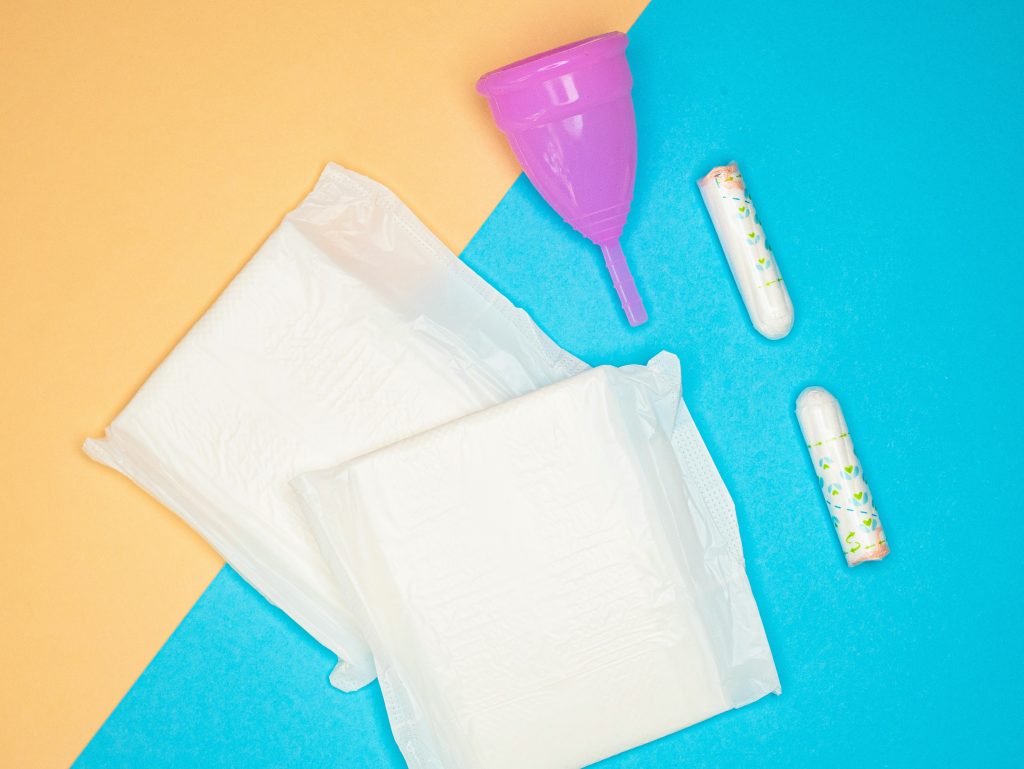Let’s talk about periods, specifically, the hidden cost of conventional pads and tampons.
Did you know that the average menstruator uses over 11,000 disposable period products in their lifetime? And most of these are loaded with plastic, chemicals, and synthetic materials that harm both your body and the planet.
If you’ve ever wondered why plastic-free period products are gaining so much attention, this is your ultimate guide.
And you’ll see why ditching plastic in your period care is a necessity.
The Plastic Problem in Conventional Period Products
Most mainstream pads are up to 90% plastic, from the leak-proof base to the synthetic top layer.
Even tampons often come with plastic applicators and non-organic cotton wrapped in plastic fibers.
- A single pack of pads = ~4 plastic bags worth of material.
- Tampons often contain rayon (a synthetic fiber) and pesticide-laden cotton.
- Most period products take 500+ years to decompose.
– Environmental Impact:
Plastic period products don’t just sit in landfills, they break down into microplastics, polluting oceans and entering the food chain.
- 1.5 billion disposable pads/tampons are flushed yearly in the U.S. alone, clogging sewage systems and harming marine life.
- Production emissions from plastic-based period products contribute to climate change.
- Incineration releases toxic fumes, including dioxins (a known carcinogen).
Thing is: Every plastic pad or tampon you use leaves a lasting mark on the planet.
Health Risks of Plastic-Based Menstrual Products
Many conventional pads and tampons contain:
- Phthalates & BPA (linked to hormone disruption, infertility, and even cancer).
- Chlorine-bleached fibers (which can create dioxin residue).
- Artificial fragrances (leading to irritation, UTIs, and yeast infections).
How Plastic Affects Your Body
- Traps moisture → Creates a breeding ground for bacteria (hello, infections!).
- Non-breathable materials → Increases risk of Toxic Shock Syndrome (TSS) from tampons.
- Long-term exposure → Chemicals absorbed through the vaginal wall enter the bloodstream.
Fact: The vagina is one of the most absorbent parts of the body, so what you put in it matters.
Benefits of Switching to Plastic-Free Period Products
1. For the Planet – A Greener Period
- Biodegradable materials (organic cotton, bamboo, hemp) break down naturally.
- Reusable options (menstrual cups, cloth pads) reduce waste by 99%.
- Lower carbon footprint, as a single menstrual cup replaces 2,400+ tampons.
2. For Your Body – A Healthier Period
- No toxic chemicals → Fewer rashes, infections, and hormonal disruptions.
- Breathable fabrics → Less irritation and odor.
- Hypoallergenic options → Safe for sensitive skin.
3. For Your Wallet – Save Money Long-Term
- Reusable products last years (a $30 cup vs. $120/year on tampons).
- No last-minute store runs just wash and reuse.
How to Make the Switch (Simple Steps)
1. Start Small:
- Try organic cotton tampons or biodegradable pads.
- Test a menstrual cup (most brands offer a sizing guide).
2. Test Out Your Options:
- Menstrual cups (silicone, reusable, lasts 10+ years).
- Period underwear (absorbent, comfy, no leaks).
- Reusable cloth pads (washable, soft, eco-friendly).
3. Find the Right Brand:
Look for certifications like:
- GOTS (Global Organic Textile Standard) for organic cotton.
- FDA-approved medical-grade silicone for cups.
Bottom Line
Periods are annoying enough without worrying about plastic pollution or hidden toxins.
But you have the power to change the game.
Switching to plastic-free period products isn’t about sacrifice. It’s about:
- Protecting your body from unnecessary chemicals.
- Reducing waste without compromising convenience.
- Saving money in the long run (who doesn’t love that?).
And you don’t have to be perfect. Start small, try one plastic-free product this cycle. See how it feels. Because every swap counts.
